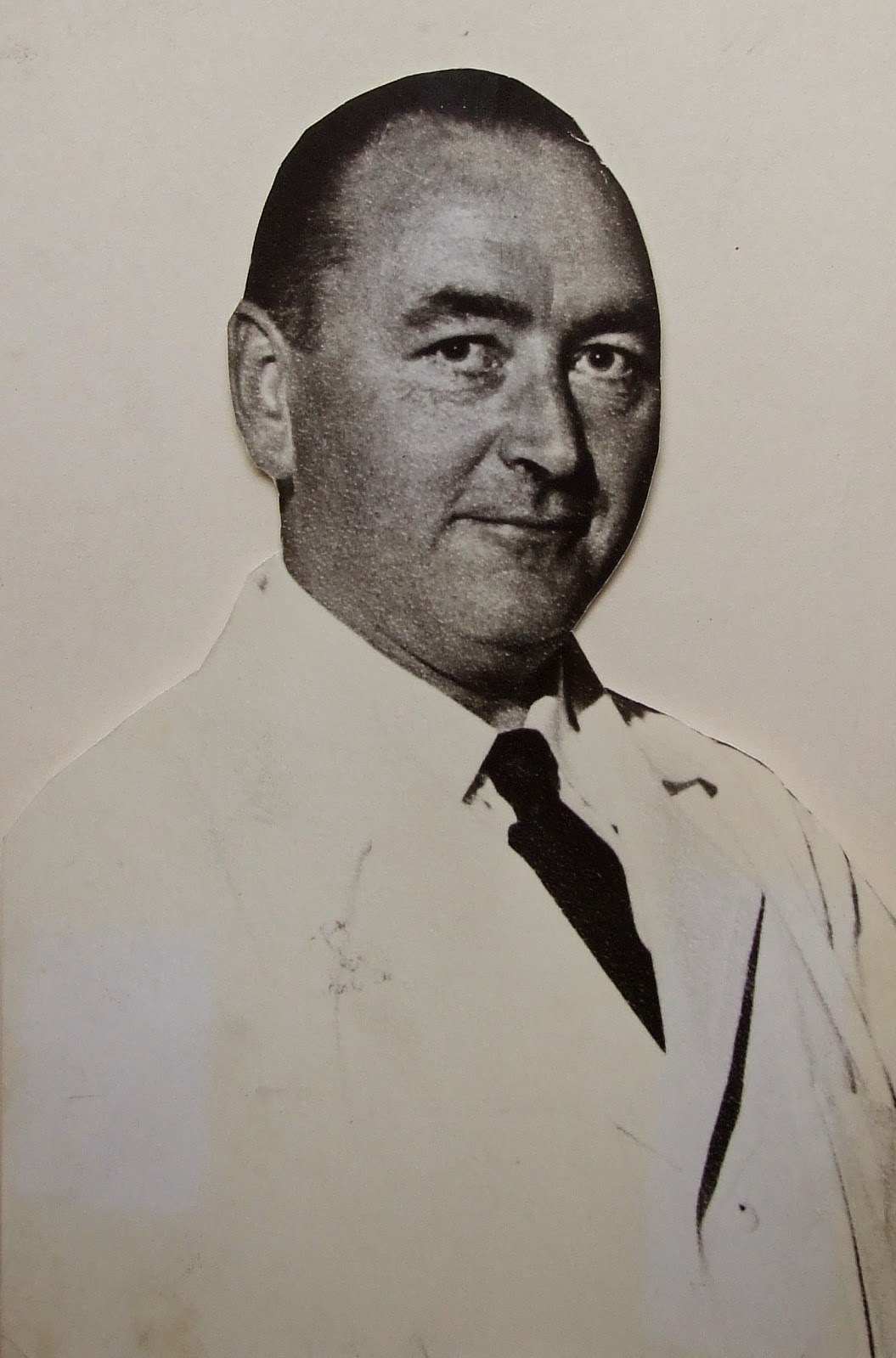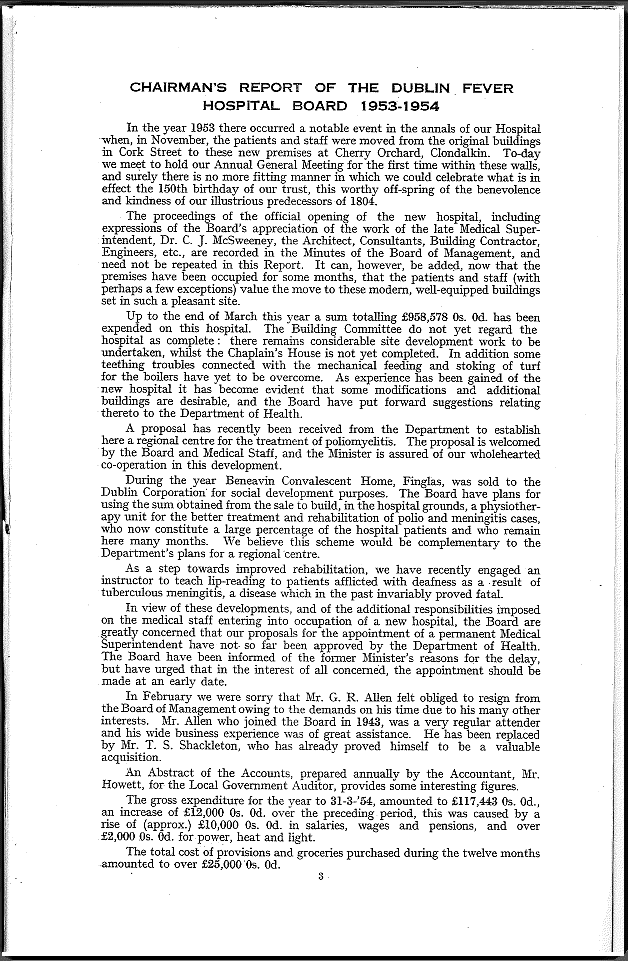Cherry Orchard Hospital Archive
 |
Picture of Dr Fergus C O'Herlihy, Medical
Superintendent of Cherry Orchard Hospital
from 1953 to 1979 (CSFH/5/2/6)
|
Last year a cataloguing and
preservation project involving the archive of Cork Street Fever Hospital commenced in the RCPI
Heritage Centre. While surveying these records at the start of this project, it
became apparent that a considerable section of the collection dated from after
1953, the year in which Cork Street closed. These records relate to Cork
Street’s successor institution, Cherry Orchard Hospital.
By the 1930s it was becoming clear
that the facilities at Cork Street, which had opened in 1804, were inadequate
for a modern hospital. In 1936 the Dublin Fever Hospital Act was passed, which transferred management of Cork Street
from a voluntary managing committee to a municipal board. The Act also sought
to “make provision for the establishment of a new fever hospital in or near the
city of Dublin and for the closing of the House of Recovery and Fever Hospital,
Cork Street, Dublin”.
Progress towards the construction of
a new hospital was slow. A site was acquired at Blackditch, Ballyfermot, Co. Dublin,
but tenders for the new hospital were not received until early 1950. The
architect for the new hospital was Mr Alan Hope, and the building
contractors Messrs Murphy Bros, Rathmines. The location of the hospital at
Blackditch presented a problem to certain members of the Board, however, who
felt that the placename evoked images of plague and the Black Death – not very
suitable for a hospital dealing with infectious diseases. Accordingly on 3 May
1951 the Board resolved that “the title and address of the new Hospital now
being built at Blackditch be the House of Recovery and Dublin Fever Hospital,
Cherry Orchard, Palmerstown, Co. Dublin”.
In November 1953, patients and staff
moved from Cork Street to the new Hospital at Cherry Orchard. The hospital was
considerably bigger than its Cork Street predecessor, consisting of 11 separate
wards or blocks on a 74-acre site. The cost of building and equipping the new
hospital was £958,578, approximately £22 million in today’s money.
 |
Section of the laboratory plans for the new Dublin Fever Hospital, Cherry Orchard, drawn by Alan Hope, Architect, in 1949 (CSFH/7/2/5)
|
In the 1950s infectious diseases were
at the cutting edge of Irish medicine, and Cherry Orchard had a high public
profile. The early years of the hospital witnessed high numbers of admissions
of patients with poliomyelitis, diphtheria, measles, and tuberculous
meningitis. In December 1954 the importance of Cherry Orchard was indicated by
its establishment as a Regional Polio Centre for Dublin and 15 surrounding
counties.
 |
Page from the annual report for 1953, the year in
which staff and patients moved from Cork Street
to Cherry Orchard (CSFH/1/2/1/14)
|
By the 1970s and 1980s, immunisation
programmes against tuberculosis, diphtheria and poliomyelitis had greatly
reduced the incidences of these illnesses. Although admissions to Cherry
Orchard remained high through to the 1990s, peaking in 1982, infectious
diseases were in decline. Services were broadened to include psychiatric
services, palliative care, drug rehabilitation services, care for the elderly, care
for people who were HIV positive, and care for chronic young disabled people.
In 2002, the wards were closed to acute infectious diseases.
The archive of Cherry Orchard
Hospital has been listed alongside the archive of its Cork Street predecessor, and
the collection list will be available to search in the RCPI archive catalogue in the coming weeks. Many
individual items and files span time periods covered by both hospitals.
Records relating to hospital
management and the administration of Cherry Orchard Hospital include a run of
minute books and agenda books from 1953 to 1961 and annual reports from 1953 to
1964. A large number of records relate to staff, students, hospital finances,
and routine supplies of goods and services. There are also smaller series of
records pertaining to the design and maintenance of buildings, and to the
hospital’s history and commemorative events (such as its Golden Jubilee
celebrations in 2003). The Cherry Orchard archive also includes a small number
of post-1953 patient records. The oldest register of patients in the collection
is from 1942 to 1948, however, and so pre-dates the move to Cherry Orchard.
Sensitive records, such as those in
which patients and members of staff are identifiable, are subject to closure
periods in line with Data Protection legislation. Records which are less than
30 years old are also closed in line with the National Archives Act.
Fergus Brady,
Project Archivist